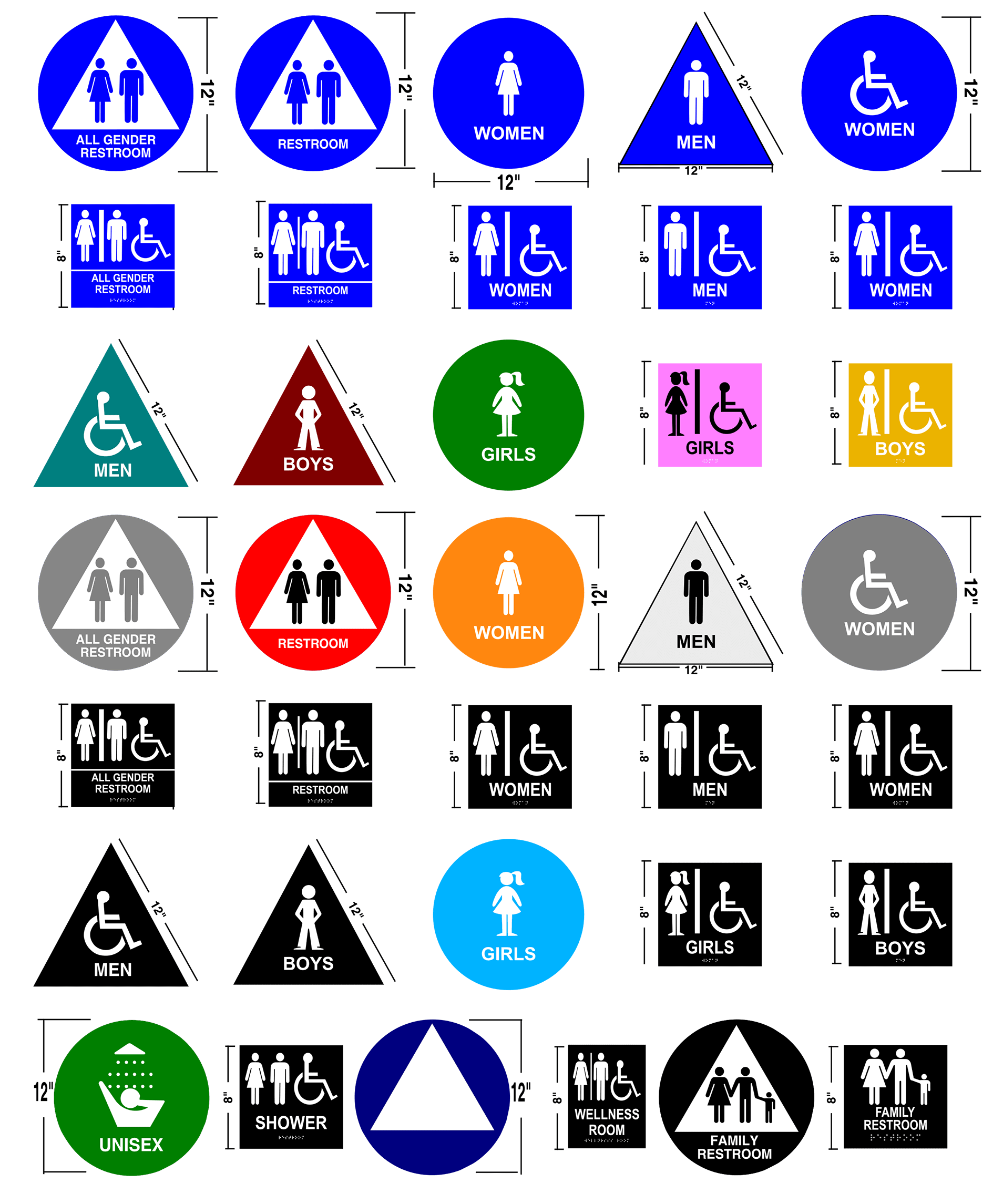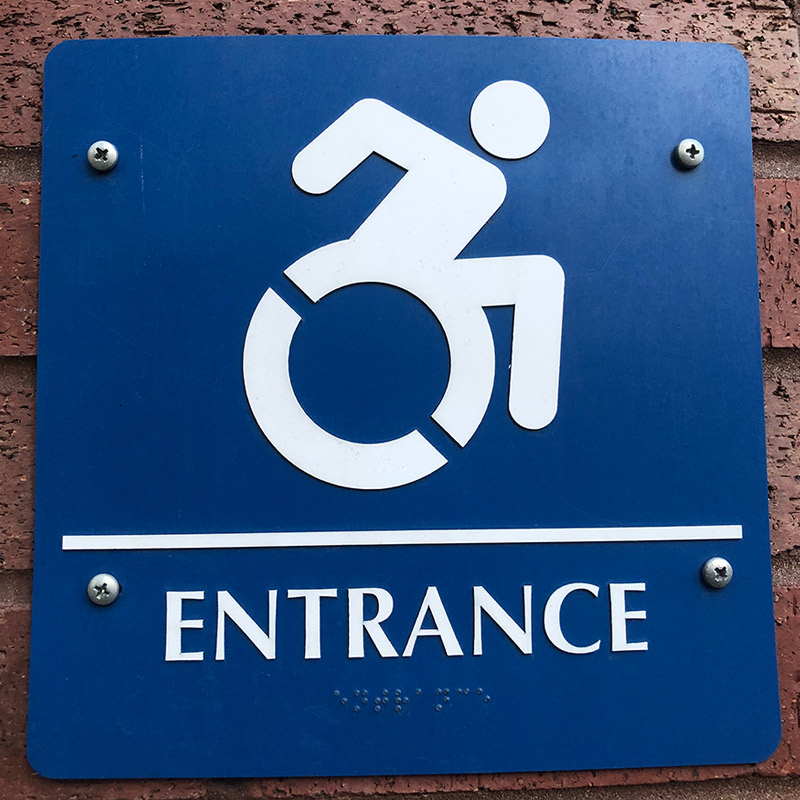Personalizing ADA Signs to Meet Your Certain Needs
Personalizing ADA Signs to Meet Your Certain Needs
Blog Article
Exploring the Key Features of ADA Signs for Improved Accessibility
In the realm of availability, ADA indicators function as silent yet powerful allies, guaranteeing that areas are accessible and comprehensive for people with handicaps. By incorporating Braille and tactile components, these indicators damage obstacles for the visually impaired, while high-contrast color design and legible fonts accommodate varied visual requirements. Furthermore, their tactical placement is not approximate however rather a calculated effort to assist in smooth navigation. Beyond these functions lies a deeper narrative about the development of inclusivity and the recurring dedication to producing fair areas. What extra could these indicators symbolize in our search of global ease of access?
Importance of ADA Conformity
Making sure conformity with the Americans with Disabilities Act (ADA) is important for promoting inclusivity and equal gain access to in public areas and offices. The ADA, enacted in 1990, mandates that all public centers, employers, and transport solutions suit people with handicaps, ensuring they delight in the same rights and possibilities as others. Conformity with ADA standards not just satisfies legal commitments yet likewise boosts a company's reputation by showing its dedication to diversity and inclusivity.
One of the key facets of ADA compliance is the implementation of obtainable signs. ADA indicators are designed to make sure that people with impairments can easily navigate via areas and buildings.
Additionally, sticking to ADA guidelines can mitigate the danger of legal consequences and potential fines. Organizations that fail to abide with ADA guidelines may face fines or lawsuits, which can be both monetarily burdensome and damaging to their public image. Therefore, ADA conformity is essential to fostering a fair environment for every person.
Braille and Tactile Aspects
The unification of Braille and tactile aspects into ADA signage symbolizes the principles of availability and inclusivity. It is usually positioned below the equivalent text on signage to make sure that people can access the details without visual aid.
Responsive components extend beyond Braille and consist of elevated symbols and personalities. These elements are made to be noticeable by touch, allowing individuals to determine space numbers, restrooms, exits, and various other crucial areas. The ADA sets details standards regarding the dimension, spacing, and positioning of these responsive elements to optimize readability and make certain uniformity throughout different settings.

High-Contrast Color Design
High-contrast shade systems play an essential duty in boosting the visibility and readability of ADA signage for people with visual impairments. These plans are crucial as they optimize the distinction in light reflectance between text and background, making certain that indications are easily discernible, also from a range. The Americans with Disabilities Act (ADA) mandates the usage of specific color contrasts to fit those with limited vision, making it a vital element of conformity.
The effectiveness of high-contrast colors depends on their capability to attract attention in various illumination problems, including dimly lit environments and areas with glare. Generally, dark text on a light history or light message on a dark background is used to achieve ideal contrast. For example, black message on a yellow or white history provides a stark aesthetic distinction that aids in quick recognition and comprehension.

Legible Fonts and Text Size
When taking into consideration the style of ADA signs, the option of legible fonts and ideal message size can not be overemphasized. These elements are crucial for guaranteeing that indicators come to individuals with aesthetic impairments. The Americans with Disabilities Act (ADA) mandates that typefaces have to be not italic and sans-serif, oblique, manuscript, highly attractive, or of uncommon kind. These demands assist ensure that the text is quickly readable from a distance which the personalities are distinct to diverse target markets.
According to ADA guidelines, the minimum text elevation ought to be 5/8 inch, and it needs to raise proportionally with seeing range. Consistency in message dimension adds to a cohesive aesthetic experience, assisting great site people in navigating environments effectively.
Furthermore, spacing in between letters and lines is essential to readability. Adequate spacing prevents characters from showing up crowded, boosting readability. By sticking to these criteria, developers can substantially enhance ease of access, making sure that signs offers its desired objective for all people, despite their visual capabilities.
Reliable Positioning Strategies
Strategic placement of ADA signage is important for site making the most of availability and making sure compliance with lawful requirements. ADA standards state that indicators need to be placed at an elevation between 48 to 60 inches from the ground to guarantee they are within the line of sight for both standing and seated people.
Additionally, signs have to be placed beside the lock side of doors to enable very easy identification before entrance. This placement aids individuals locate rooms and rooms without blockage. In situations where there is no door, indications must be situated on the closest adjacent wall surface. Consistency in sign positioning throughout a facility boosts predictability, reducing complication and enhancing general customer experience.

Conclusion
ADA indications play a crucial function in advertising access by integrating features that attend to the requirements of individuals with impairments. Incorporating Braille and responsive elements guarantees vital information is easily accessible to the visually damaged, while high-contrast shade plans and clear sans-serif fonts enhance presence across different lighting conditions. Reliable positioning methods, such as ideal installing heights and tactical places, see this page better assist in navigation. These aspects collectively promote an inclusive atmosphere, emphasizing the relevance of ADA conformity in making certain equal gain access to for all.
In the realm of ease of access, ADA indications serve as quiet yet effective allies, guaranteeing that spaces are inclusive and navigable for people with impairments. The ADA, enacted in 1990, mandates that all public facilities, companies, and transportation services accommodate individuals with impairments, guaranteeing they take pleasure in the same civil liberties and chances as others. ADA Signs. ADA indications are made to ensure that people with impairments can easily navigate through rooms and structures. ADA guidelines stipulate that indications should be mounted at an elevation in between 48 to 60 inches from the ground to guarantee they are within the line of sight for both standing and seated individuals.ADA signs play an important duty in advertising ease of access by incorporating functions that address the needs of individuals with disabilities
Report this page